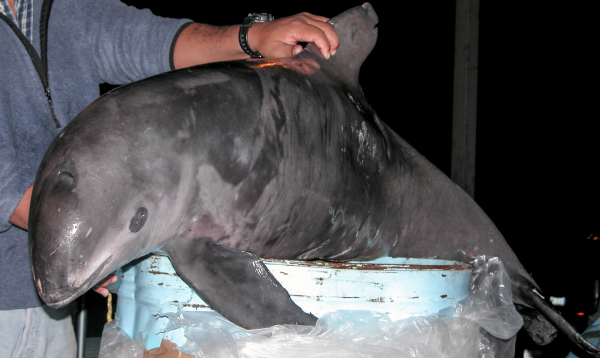On World Wildlife Day, scientists highlight
the threat of cetacean extinctions - and importance of acting now
This World Wildlife Day, as the IWC reaches its 75th birthday, members of the Scientific Committee are raising awareness of the need for increased action to prevent extinction of cetacean species. As part of education and outreach efforts, a new section of the IWC website has been developed, containing information about extinction and the threats facing whales, dolphins and porpoises today.
The IWC Scientific Committee includes world-leading experts in a range of cetacean specialisms. From the outset in 1946, the IWC has sought the best available scientific information to inform decision-making and deliver on its mandate to regulate whaling and conserve whale stocks.
In its anniversary year as the Commission reflects on its past and considers its future, members of this long-standing scientific community are shining a spotlight on the threats to cetaceans and the many activities endorsed by the IWC to address them.
Today, bycatch and entanglement are widely considered to be the biggest threats to cetacean populations. Over 300,000 whales, dolphins and porpoises are estimated to die in fishing nets each year, caught accidentally and unable to reach the surface to breathe. Whales must also contend with ship collisions, ocean noise, marine debris, chemical pollution and the effects of climate change.
IWC scientists highlight recent rises in rates of extinction for many species, including cetaceans. They point to the plight of the baiji river dolphin, thought to be the first dolphin species driven to extinction by human activity, and the vaquita, a small porpoise whose population declined by 92% in twenty years and now numbers less than twenty animals, due to bycatch in illegal fishing nets.
Despite this, the message from the scientists is not despair, but a call to action. They also highlight some success stories, reasons to re-double efforts and engage now. These include the recovery of many humpback populations, and the blue whale, perhaps the species most recognized as returning from the brink of extinction. These are the largest animals ever to live and yet their Southern Hemisphere population shrank from a pre-whaling estimate of 200-300,000 to less than 400 animals. The first protections were introduced in the 1960s and in 1998, a survey assessed the population to have risen to approximately 2,300 animals. A new assessment is currently underway and anticipated to show a slow but steady continued increase.
Over 75 years, the IWC work programme has evolved and expanded to address each new threat. As well as regulation of whaling and the ongoing effort to understand population sizes, structures, and the impact of different threats on them, initiatives are in place to tackle bycatch, entanglement, ship collisions, ocean noise, marine debris, chemical pollution and the effects of climate change. Work programmes also aim to establish international best practice and provide expert advice, including on strandings response and whale watching.
The IWC operates at many levels, working with other intergovernmental organisations, national and local governments, regional bodies and communities. Individuals can also play an important role and the new webpages include some suggestions on how to get involved. Perhaps the most important of these is to share knowledge, and the IWC scientists hope that these new webpages will help to raise awareness and encourage action at every level.
Click here to read the new web section about cetaceans and extinction.

